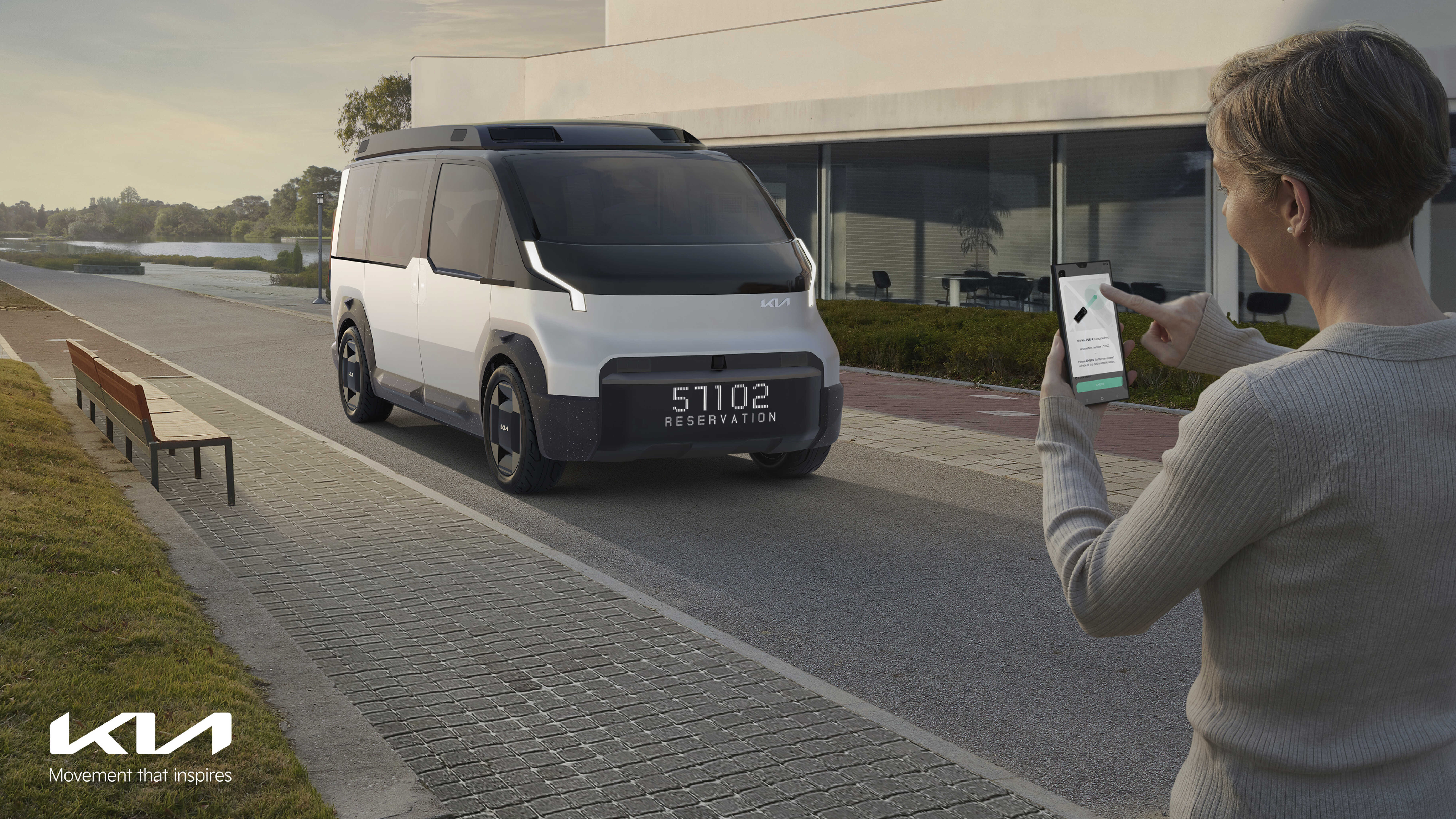
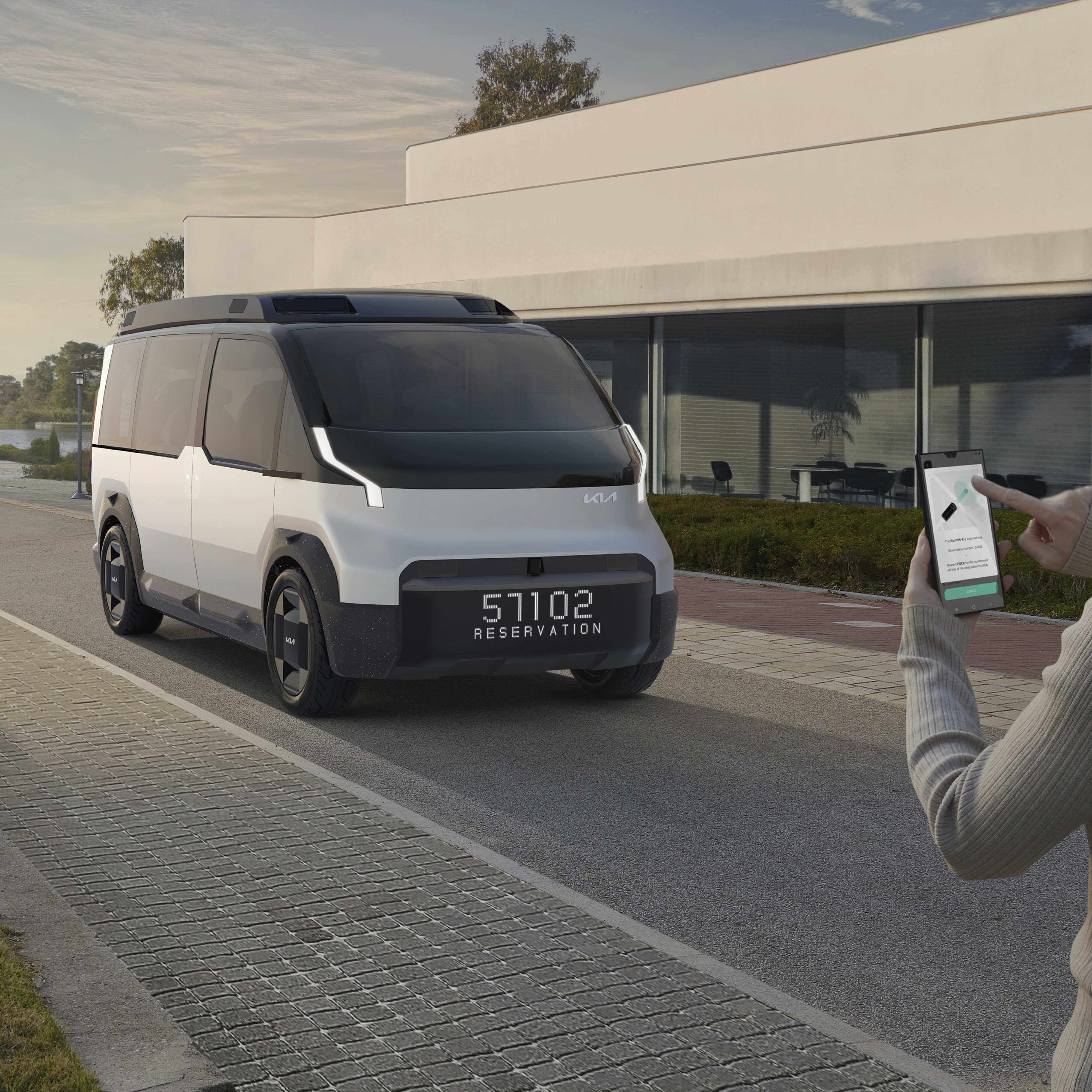


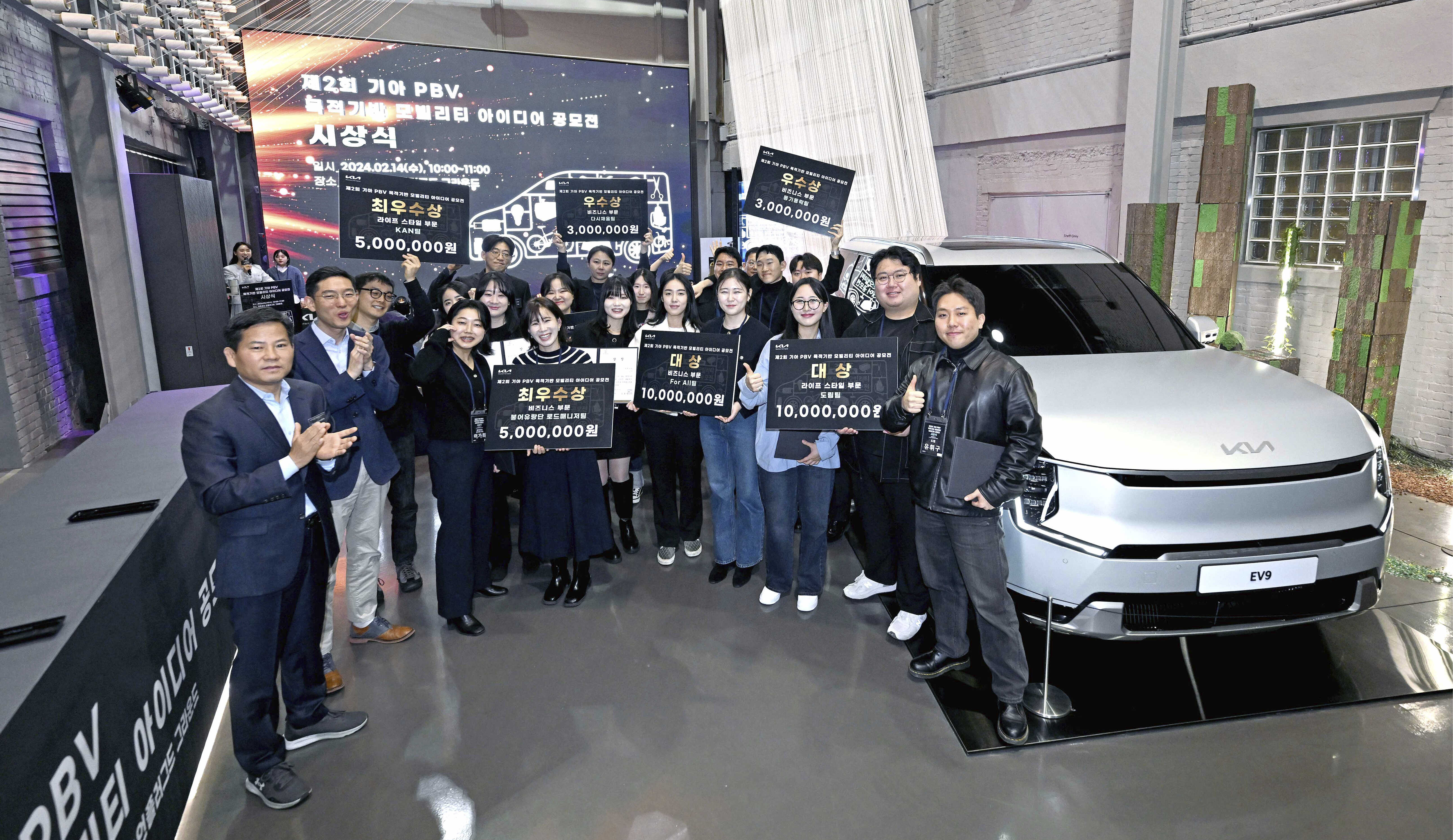
Kia’s ‘2nd PBV (Purpose Built Vehicle) Idea Contest’ has successfully concluded. Conducted through the official website from November 21st to December 31st last year, a total of 604 teams participated in this competition. Kia honored a total of 8 teams with awards through evaluations and preliminaries by a panel of experts in the field, as well as the final round held on January 29th of this year.
This year’s competition was centered around the midsize PBV scheduled for release in 2025 and was divided into ‘Lifestyle’ and ‘Business’ categories based on participation goals and target groups. The Lifestyle category was open to all participants, emphasizing ideas for everyday and leisure activities, while the Business category sought ideas from individuals interested in vehicle-based ventures or possessing diverse experiences in this field.
PBV, a modular mobility platform built on electrification, is designed with a focus on usage purpose, contrasting with traditional automobiles that are typically driver-centric. The primary focus of Kia’s PBV project is to flexibly produce vehicles that provide tailored solutions for diverse purposes. One of the objectives behind organizing this competition is to identify customer needs for PBV development and integrate them effectively. This certainly offers an excellent opportunity to get a glimpse into the world we are soon to encounter. Now, let’s introduce the winning ideas from the 2nd PBV Idea Contest.
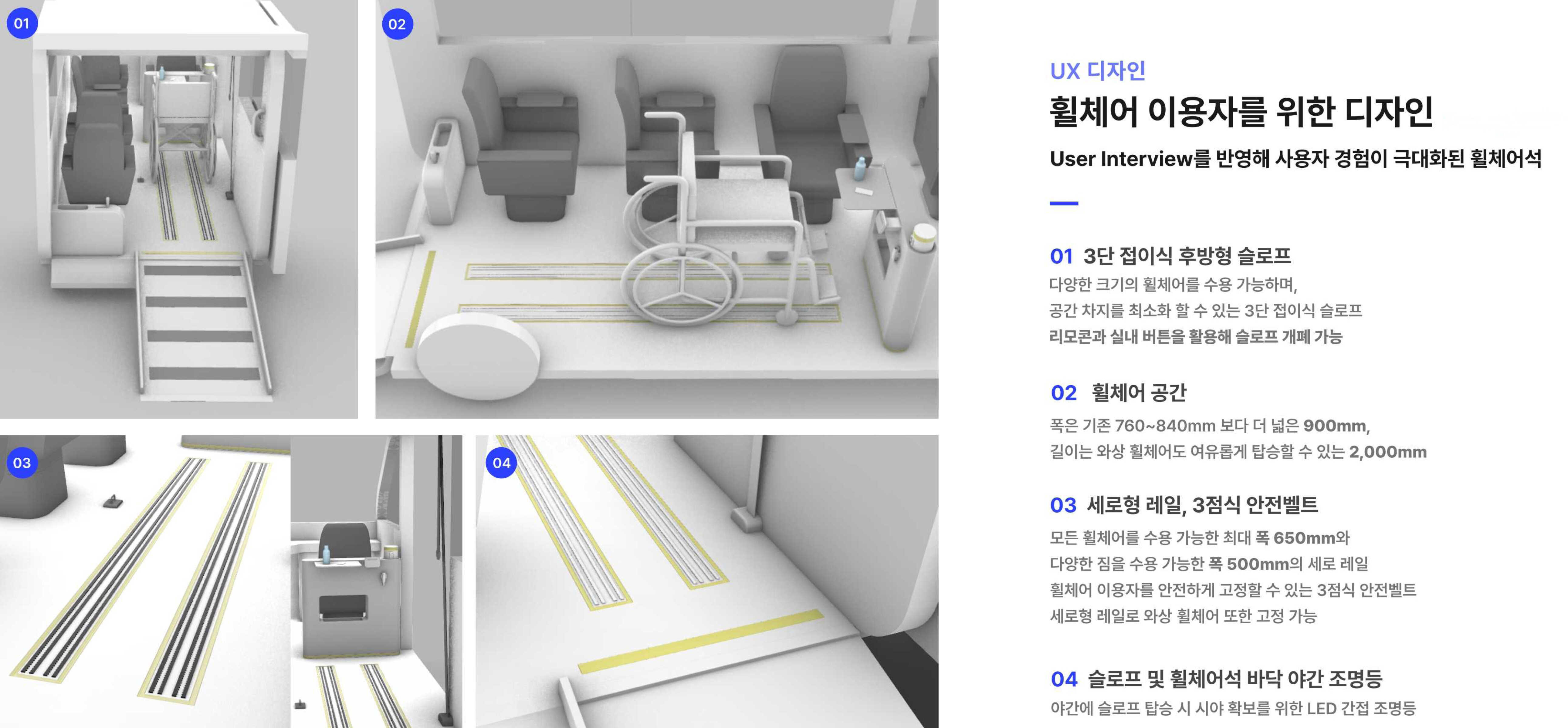
Winner of the Business Category in the 2nd PBV Idea Contest, ‘Team For All’ proposed a PBV-based coexistence mobility solution aka ‘COMO’. This involves improving the mobility convenience of wheelchair-accessible vehicles and utilizing wheelchair seats for a range of purposes. Most wheelchair-accessible vehicles utilize dedicated spaces for securing, like the third row in the Kia Carnival. However, being in the rear side of the vehicle makes communication with others difficult, and there is a limitation due to a shortage of vehicles in comparison to demand.
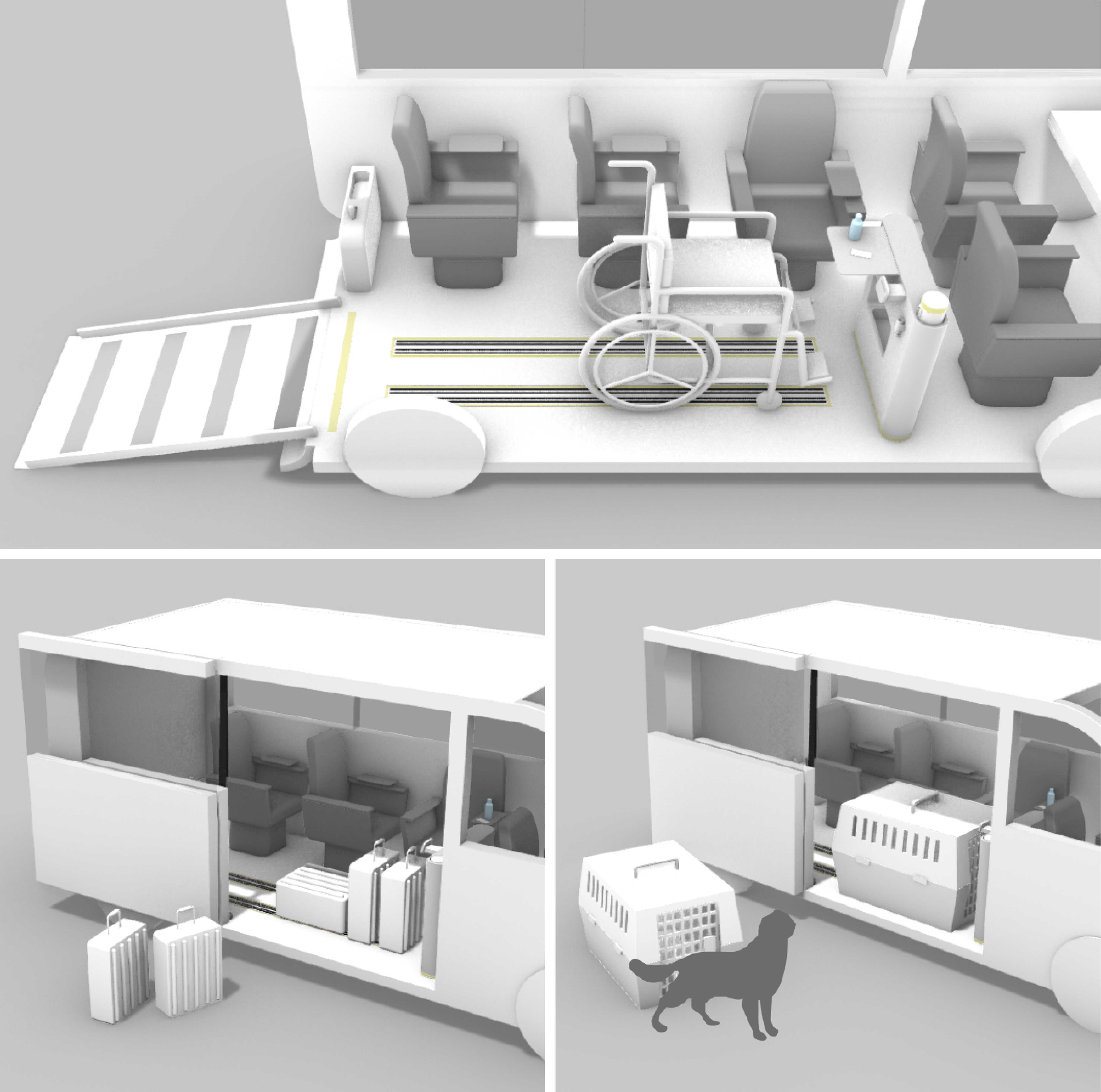
Then, what if we create a mobility solution that is not only wheelchair-accessible but also useful for passengers who do not use wheelchairs? COMO’s proposal involves attaching vertical rails on the interior right side of the PBV for wheelchair fixation. This PBV can utilize the indoor V2L function to charge electric wheelchairs while in motion, and can also be used in various ways such as carrying travel bags or pet carriers using detachable fixing devices. Likewise, the advent of multipurpose transportation with PBVs signifies an expansion of our mobility rights.
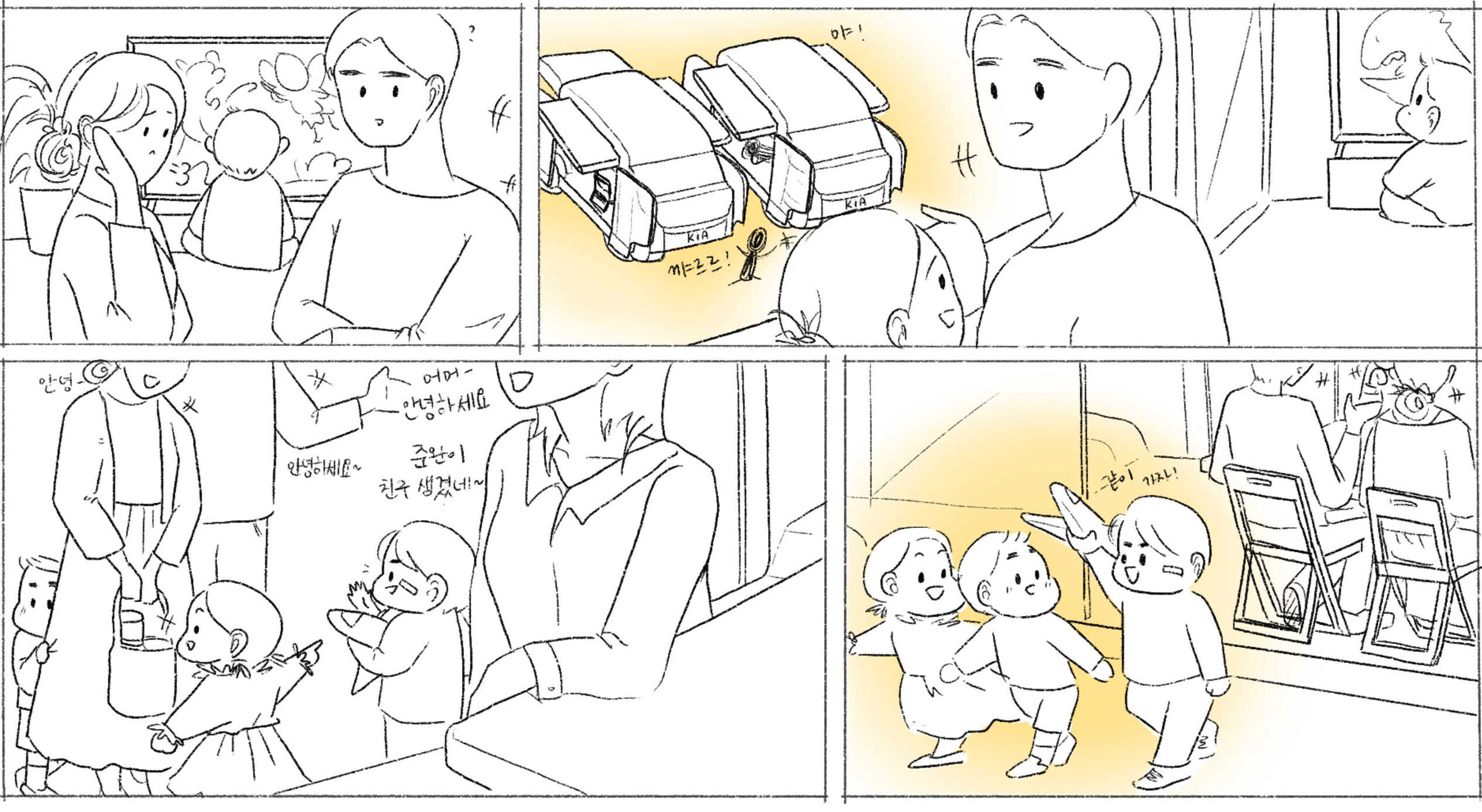
The ‘Dorim’ team, winner of the Lifestyle category, proposed the integration of PBVs into conventional vehicle-sharing services. While current vehicles from sharing services focus on ‘movement,’ Dorim’s Community Sharing Mobility emphasizes the concept of ‘space.’ This implies that PBVs from the car sharing service function as hubs during various events.
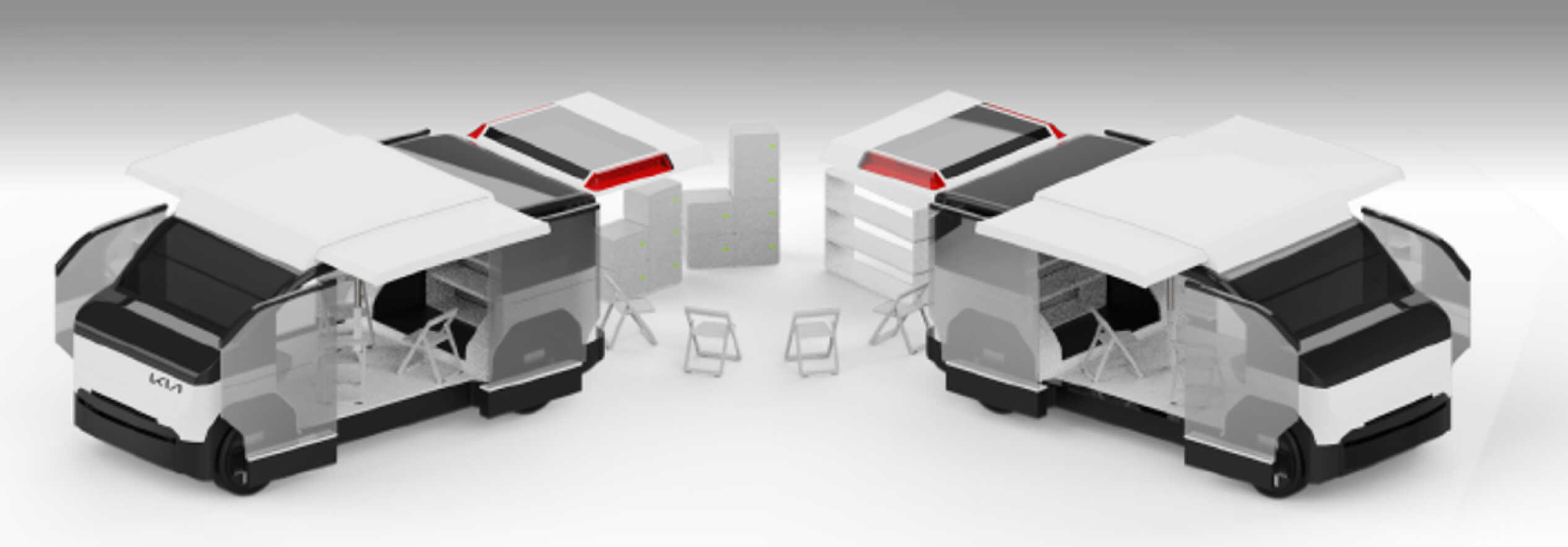
For instance, local flea markets typically serve as social hubs for neighbors, requiring a space for people to gather and engage in conversation. By installing modular storage cabinets and lockers inside the PBV, it can readily become a shared space for everyone. The concept of integrating PBVs into vehicle sharing services to foster community connections beyond mere transportation is a highly promising idea.
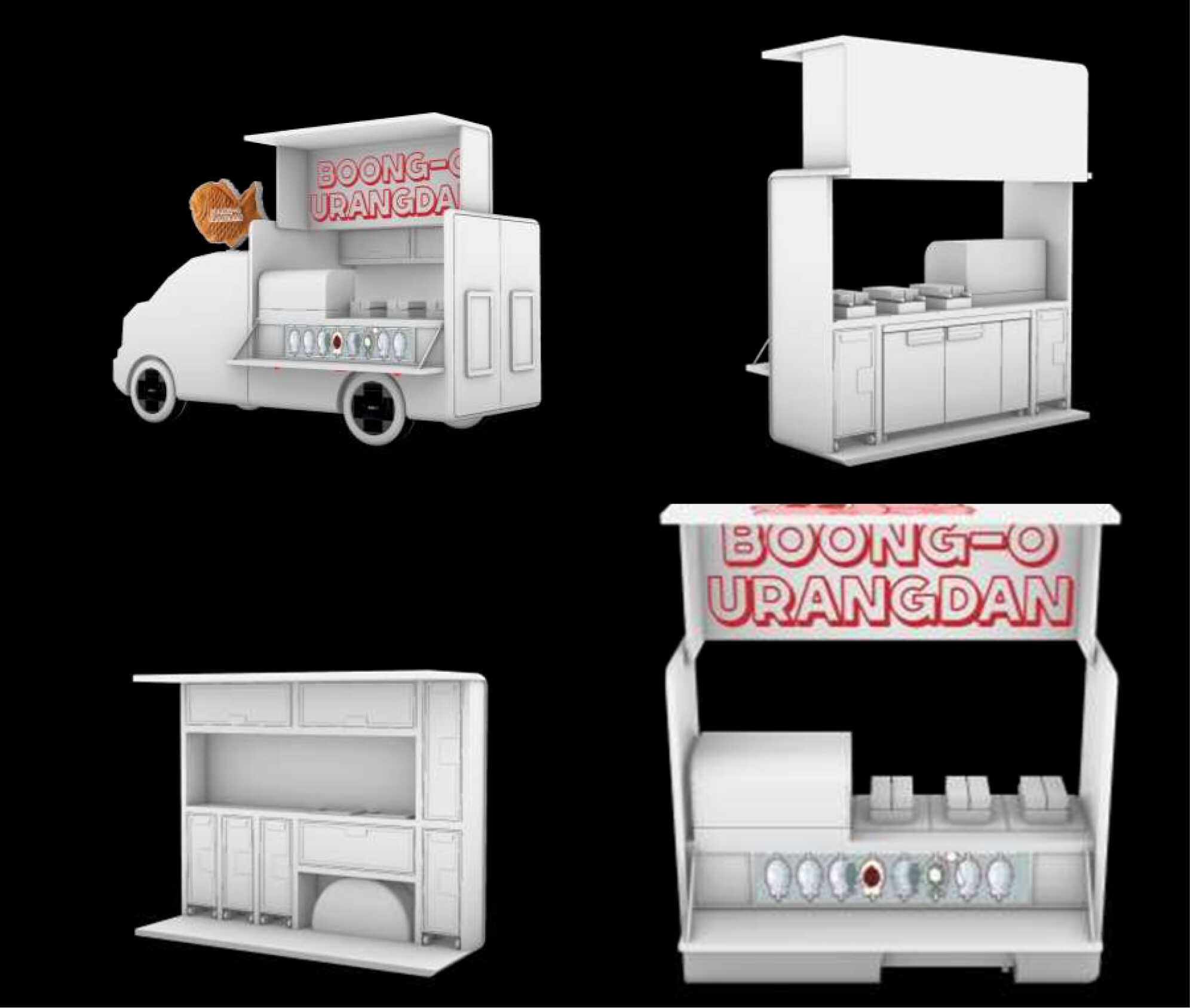
The renowned bungeobbang (Korean traditional fish-shaped pie) eatery ‘Bungeoyurangdan’ in Seongsu-dong, Seoul, has proposed the idea of utilizing PBVs as a food truck named ‘Bungeoyurang-Car.’ The food trucks they currently rent for pop-up store events often lack adequate indoor space and electric capacity, posing a challenge in procuring vehicles with the desired specifications each time.
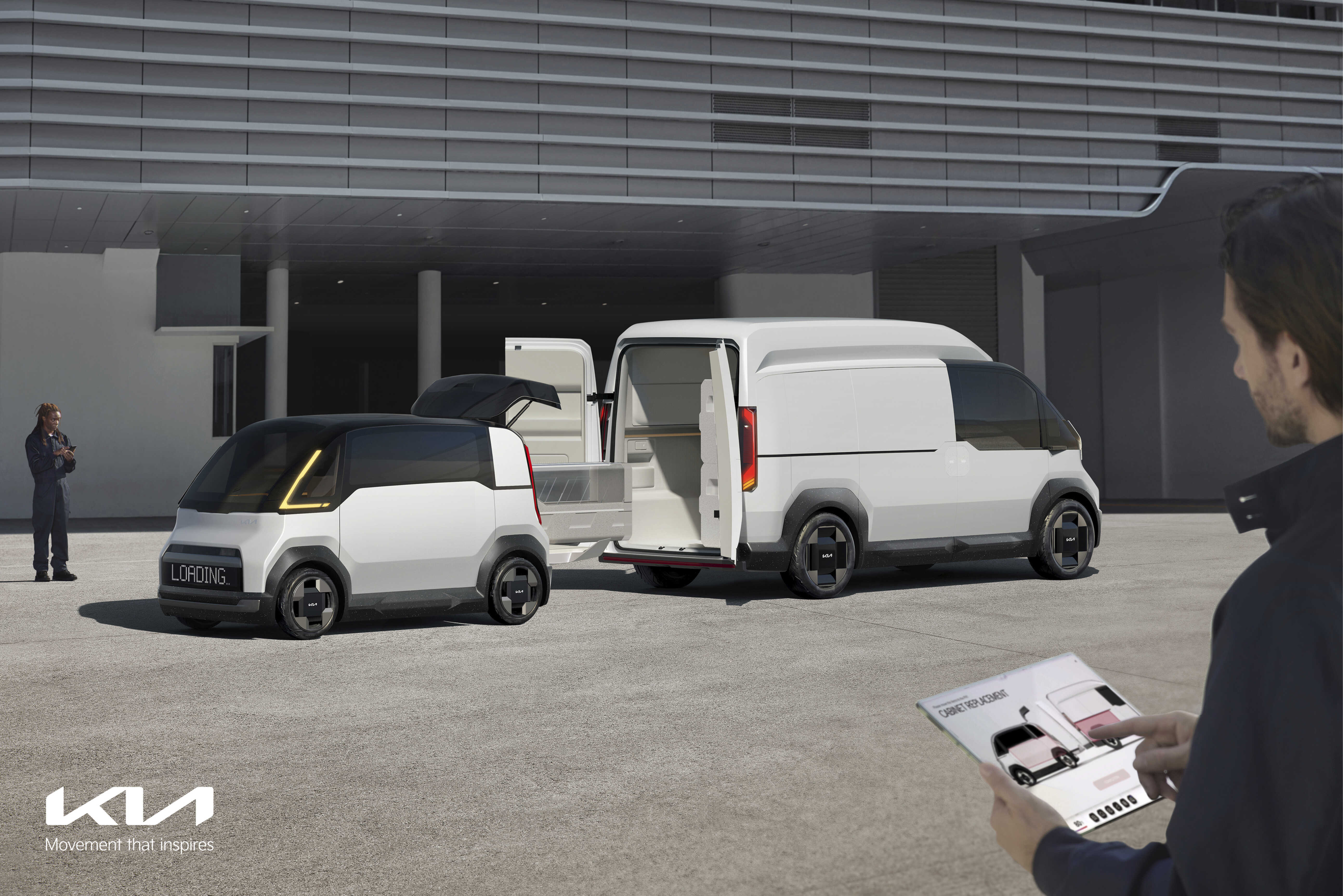
In that case, why not utilize PBVs as food trucks? First of all, PBVs are electric mobility vehicles with ample battery capacity, eliminating the need for an additional generator. The natural disappearance of generator noise leads to improved communication with customers. Additionally, you can freely expand the indoor space by attaching and detaching cabinet-style kitchen modules as needed. The food truck rental service utilizing PBVs will undoubtedly offer innovative services to individuals seeking mobile pop-up stores.
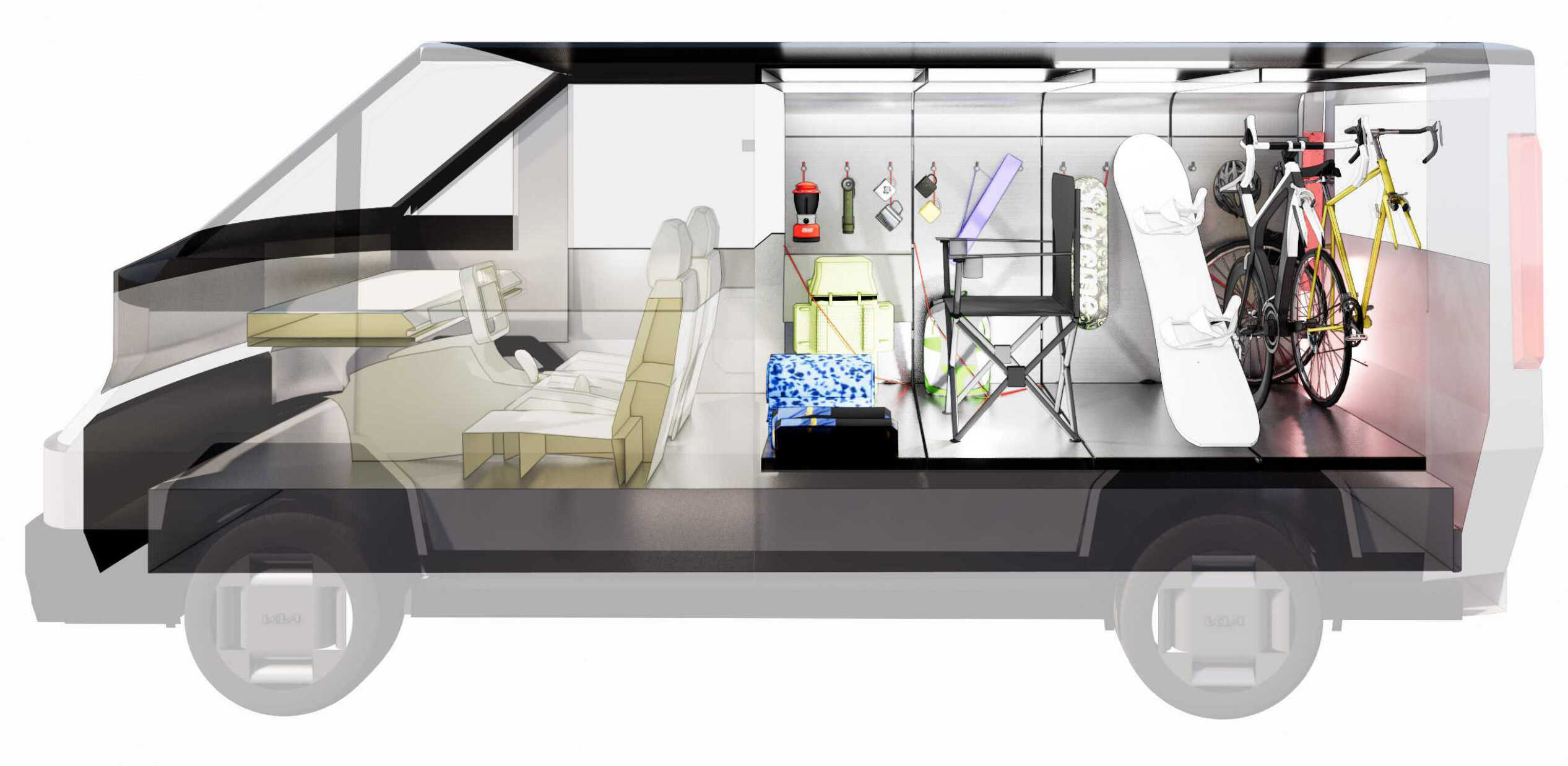
The interior space of a PBV, where seats can be removed to fully utilize the area, is spacious enough to be likened to a small room. This fact enables PBVs to function as additional outdoor spaces for leisure or hobbies, similar to the backyard annexes or sheds commonly found in American homes with yards.
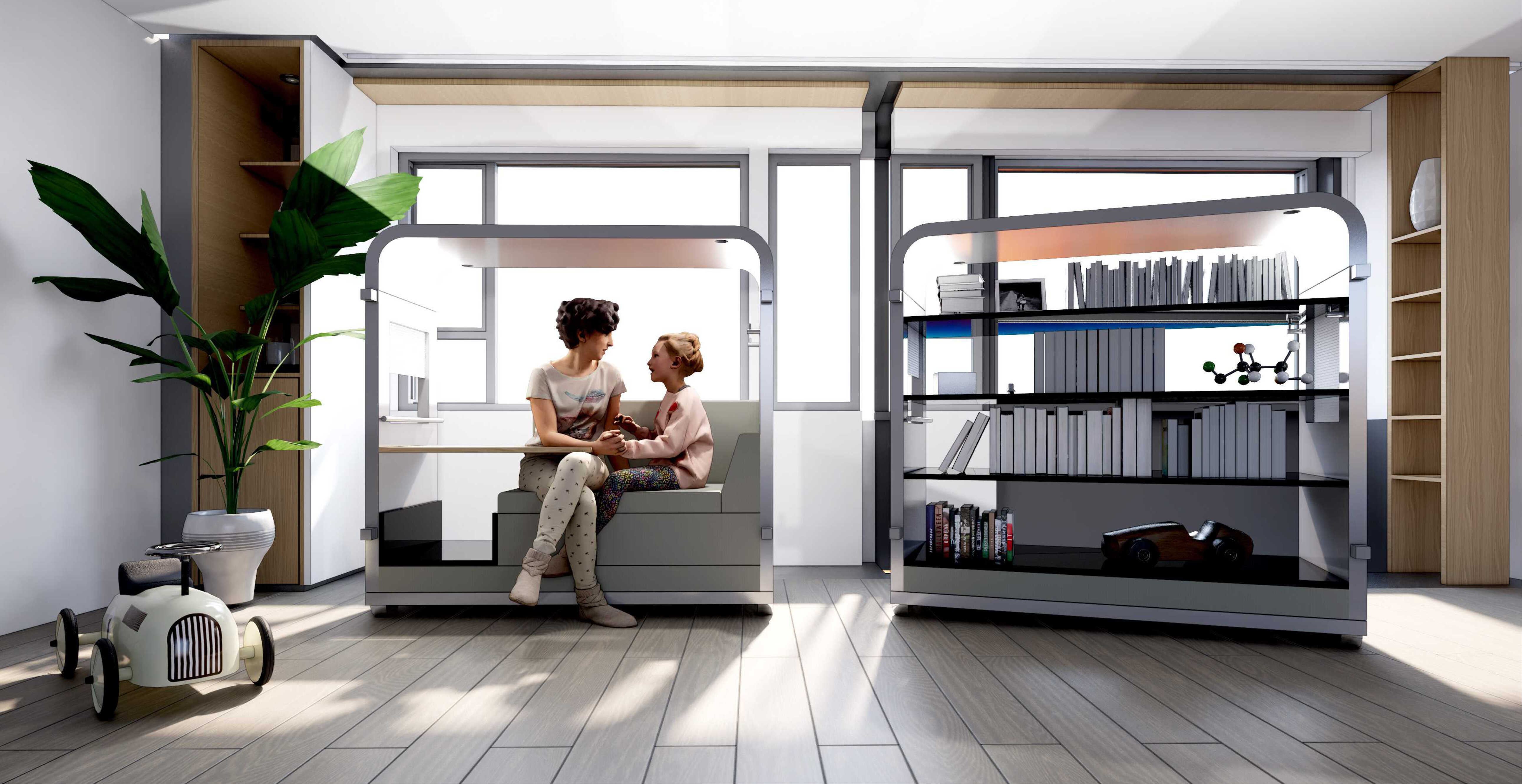
The ‘KAN’ team proposed a method of removing all the seats and inserting a space unit consisting of four compartments to utilize the space. The space unit, measuring 60cm in width, can function as furniture for storing objects like hobby items. Up to four of these units can be placed in the PBV to create separate individual spaces, which can be relocated to adjust the space as needed. In typical residential complexes such as apartments in South Korea, such PBVs parked in underground parking lots can serve as personal spaces.
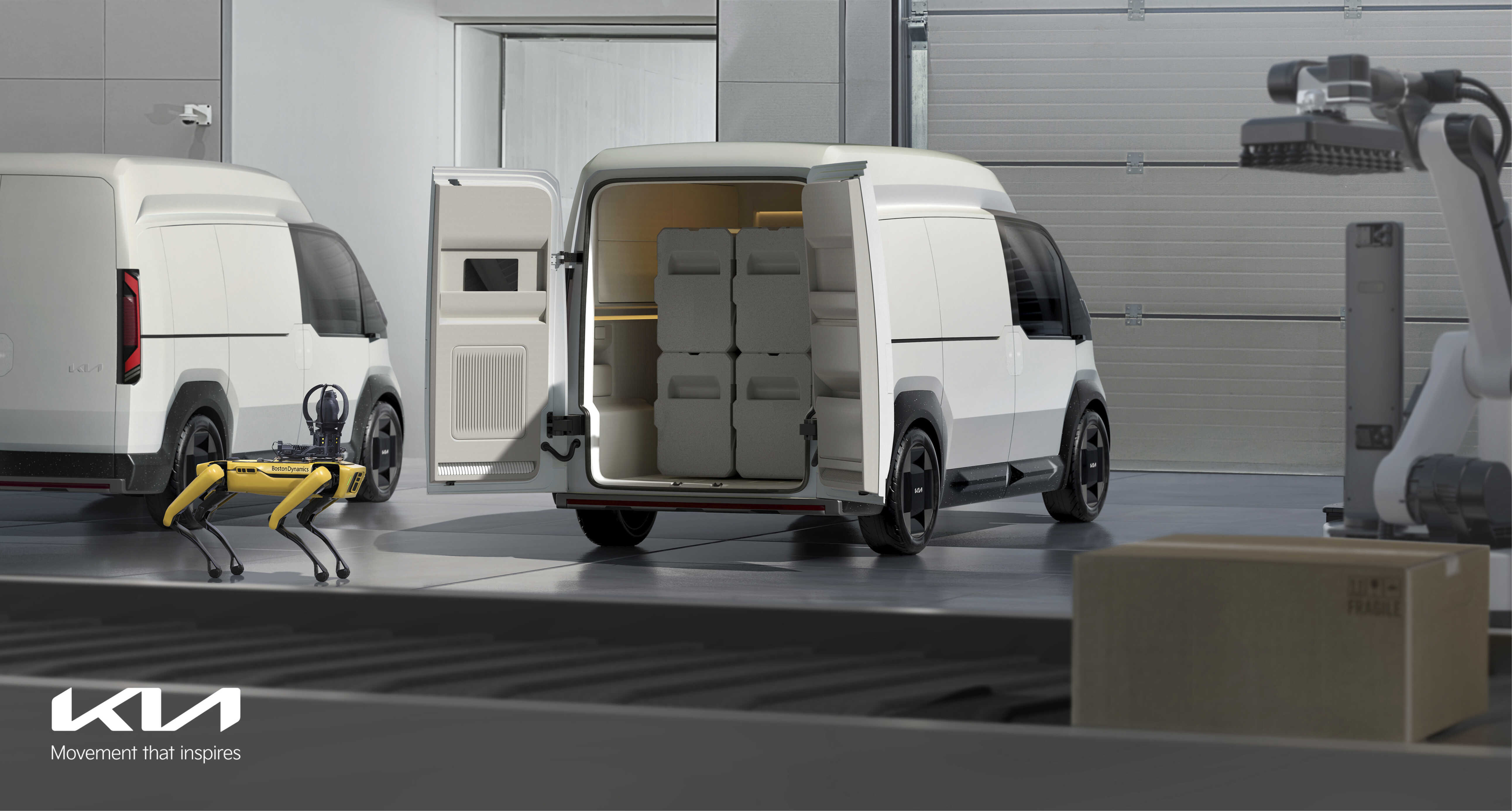
PBVs are expected to emerge as the leading vehicle type for Last Mile Delivery, a task currently performed by 1-ton trucks. ‘WeMeet Mobility,’ offering same-day delivery service on Jeju Island, introduced the concept of Last Mile Delivery specialized PBVs. The primary items for Last Mile Delivery are household goods, usually transported by 1-ton to 1.2-ton trucks. However, the necessity for separate vehicles to transport ambient and refrigerated products highlights the need for improvement.
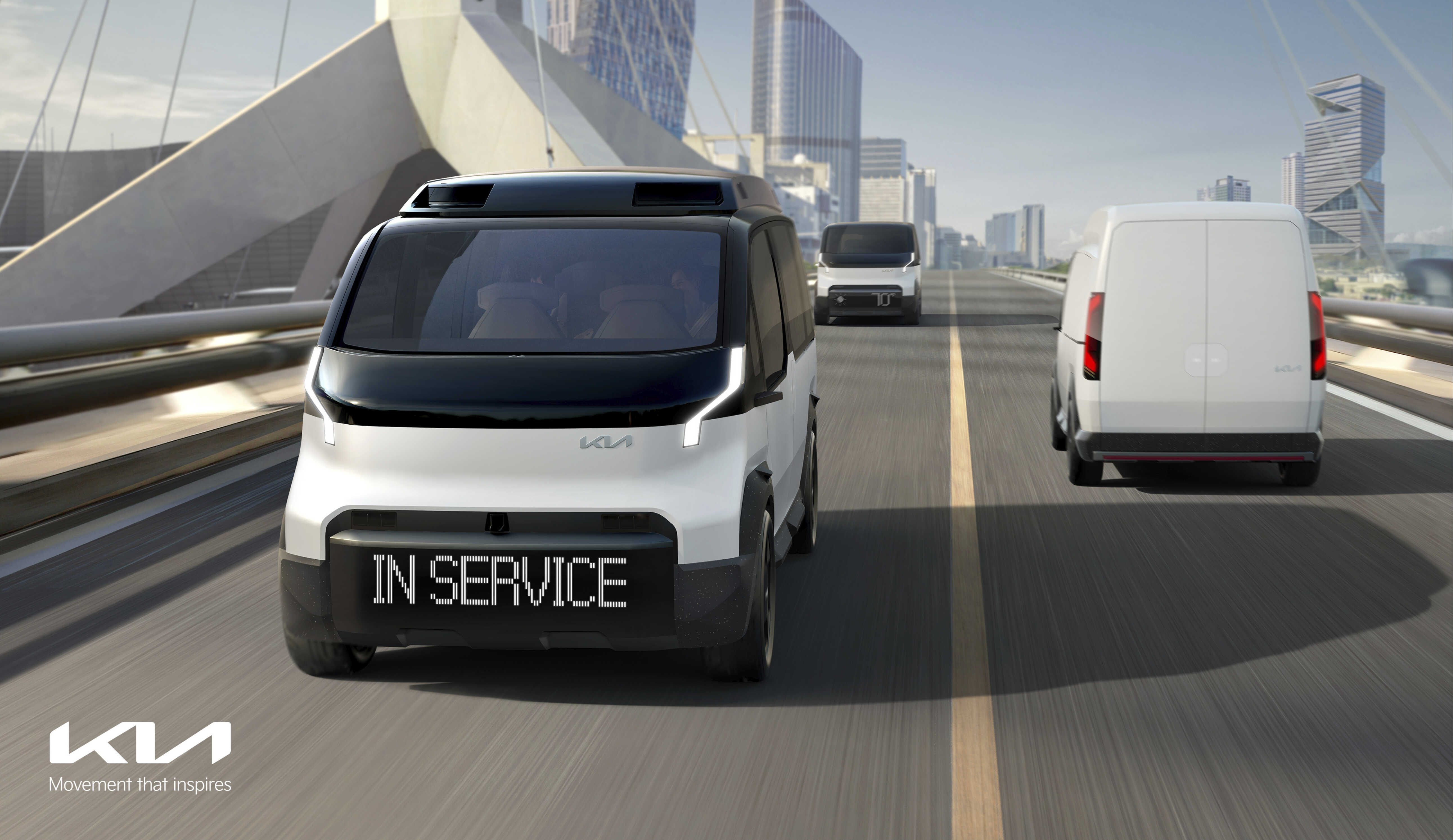
Utilizing PBVs equipped with indoor V2L technology for convenient electricity supply would eliminate the necessity for separate refrigerated trucks by installing low-temperature modules like indoor refrigerators. The V2L technology can also be utilized within PBVs to internally charge electric delivery carts. Additionally, attaching adjustable shelves enables easy loading of non-standard-sized items. The potential of PBVs for Last Mile Delivery is limitless, as evidenced.
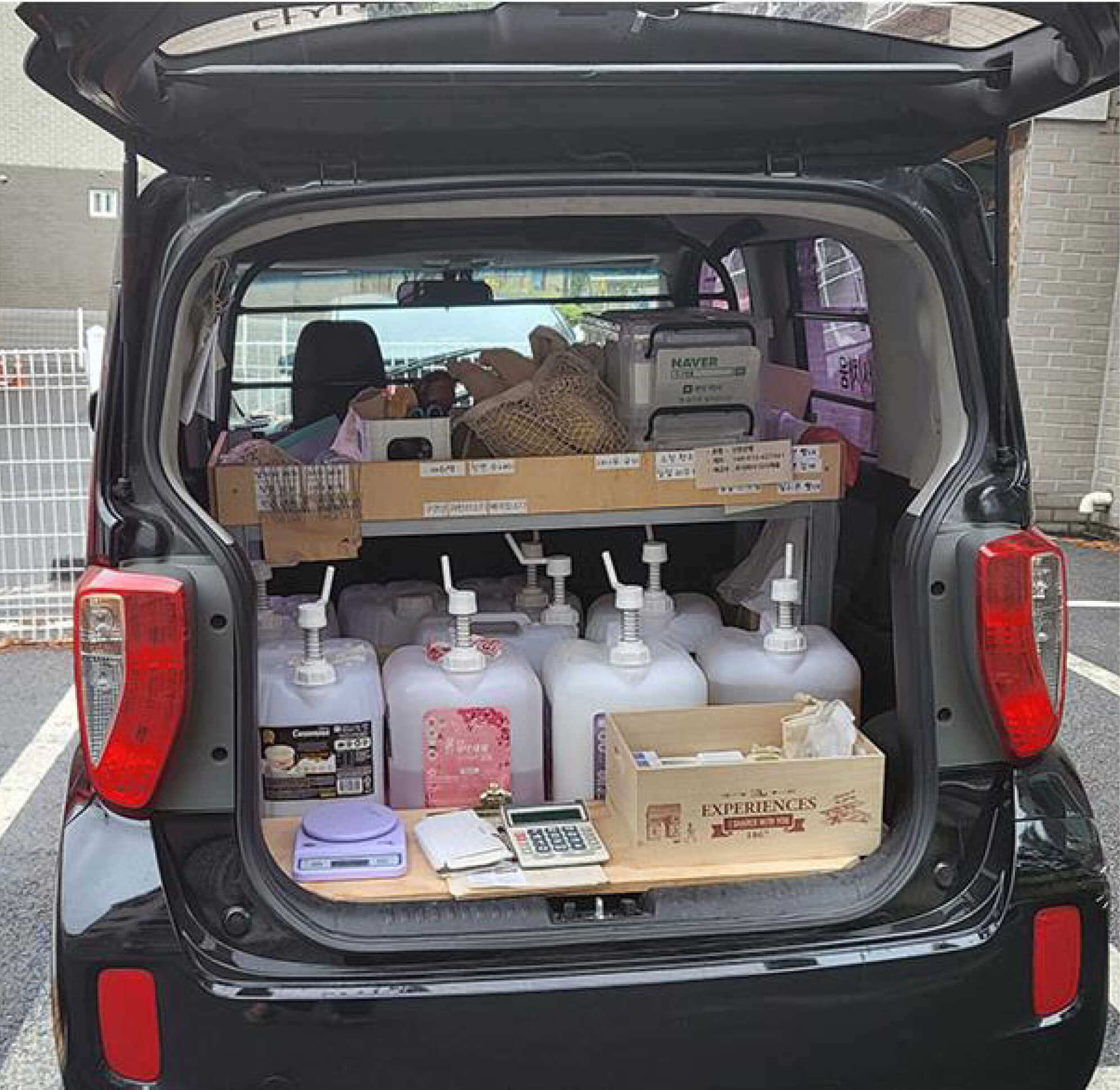
You might have already heard of the ‘Zero Waste’ campaign aimed at reducing waste, with refillable products replacing plastic usage being prime examples of this initiative. The primary focus of this expanding business is to alleviate inconvenience and cost burdens for consumers. Ensuring that refills are as convenient and cost-effective as purchasing new products is crucial for driving consumer purchases.
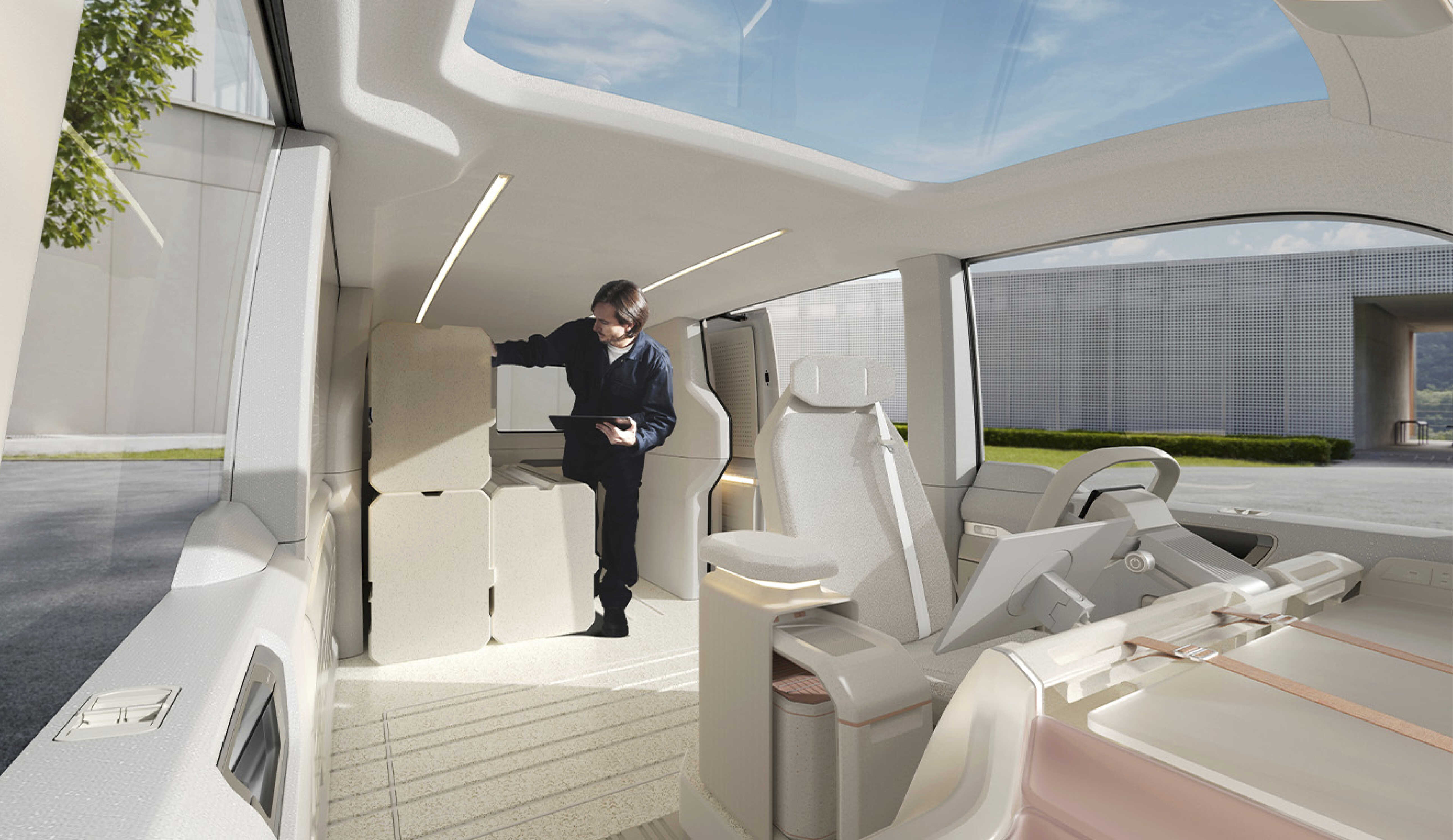
The ‘Dasichaeum (Refill for Earth)’ team operates detergent refill service vehicles for kitchen detergents, laundry detergents, soap, and various other products. Nonetheless, they face certain difficulties, such as relying on manual refill pumps due to power supply issues, along with spatial limitations that impede the operation of multiple products. What if they utilize PBVs for their mobile stores? This would not only enable the installation of electric pumps for easy refills but also allow for interior space customization.
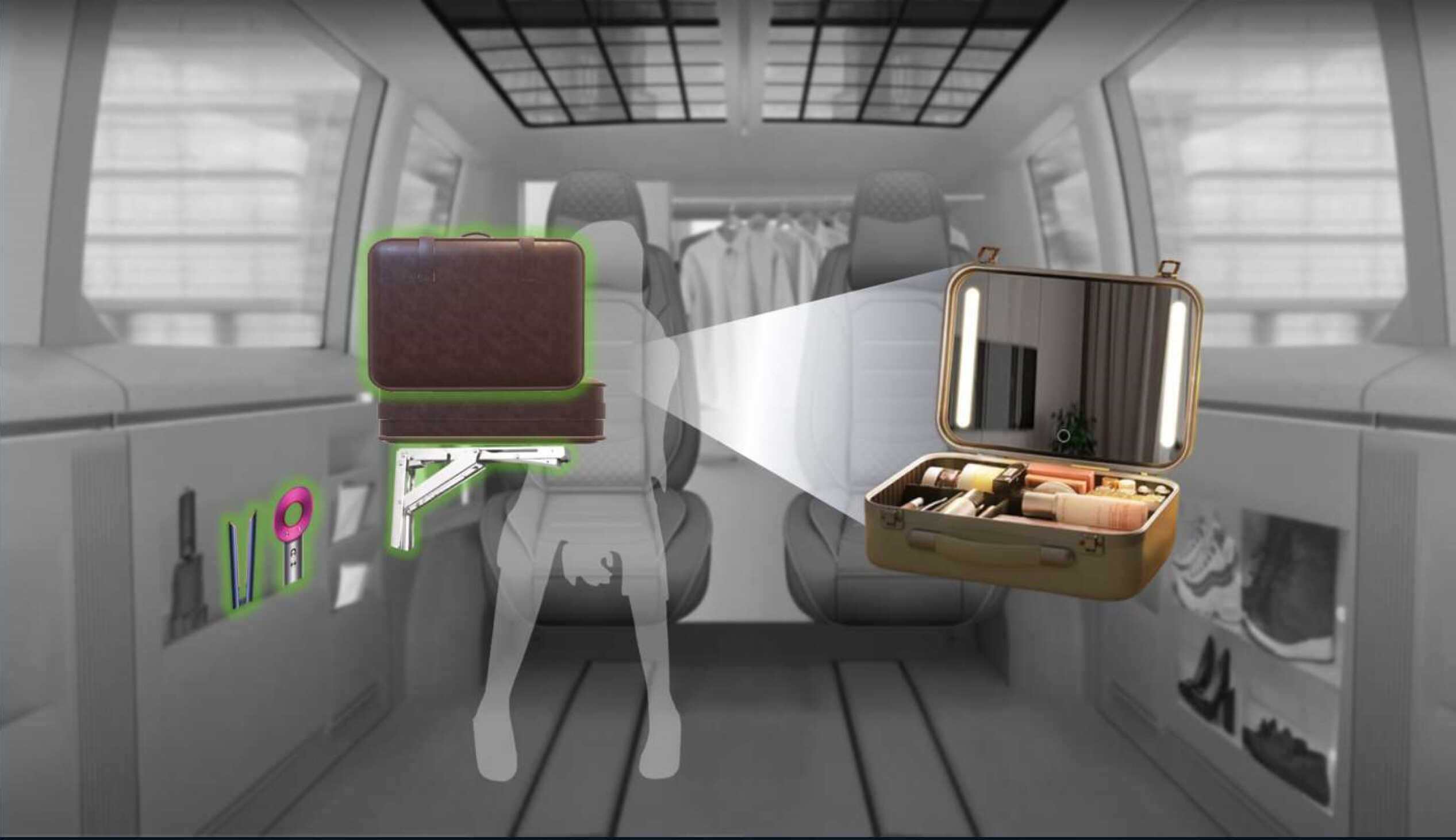
The ‘Donggidonglak’ team explores the potential of PBVs under the theme of ‘Mobility considering the user experience of celebrities.’ A significant portion of domestic celebrities currently favor the Kia Carnival as their mobile dressing room, thanks to its ability to accommodate multiple passengers and its spacious interior. However, PBVs offer even more spacious interiors and the ability to utilize electricity, making them a viable alternative.

PBVs with low ground clearance, in particular, facilitate easy indoor clothes changing due to their ample interior space. Moreover, V2L technology allows for easy usage of high-power hairdryers without excessive electricity consumption. Converting the interior of a PBV into a mobile mini studio, where celebrities can freely move, do makeup, and change outfits akin to a real dressing room, would create a portable studio catering to both celebrities and the beauty industry.
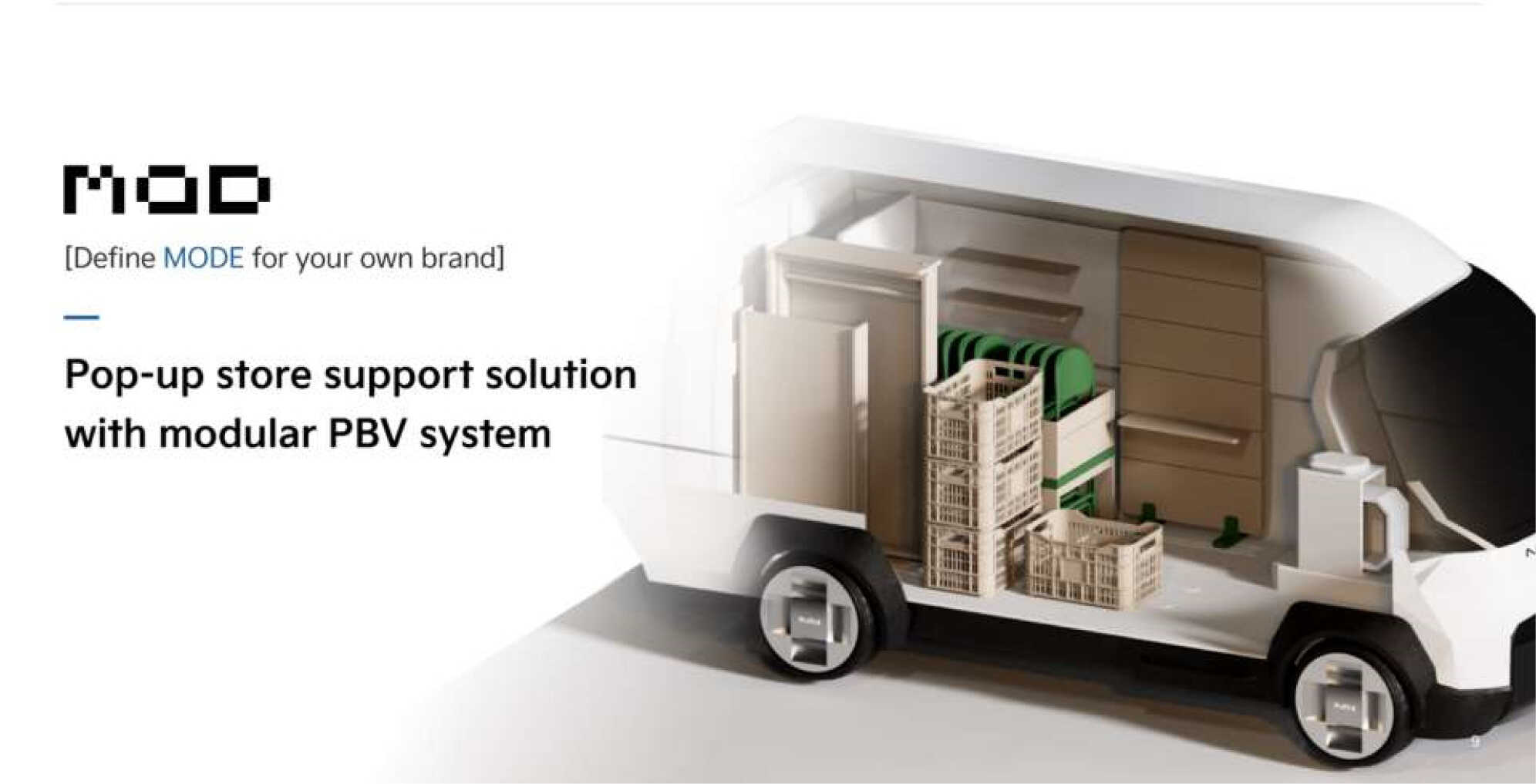
Popup stores have emerged as crucial intersections between consumers and brands in South Korea’s contemporary marketing landscape, enabling brands to directly engage with consumers beyond the confines of the online realm. However, for small-scale brands aware of the usefulness of popup stores, find it challenging to proceed with setups due to the significant costs involved in repeatedly renting venues and designing interiors across various locations.
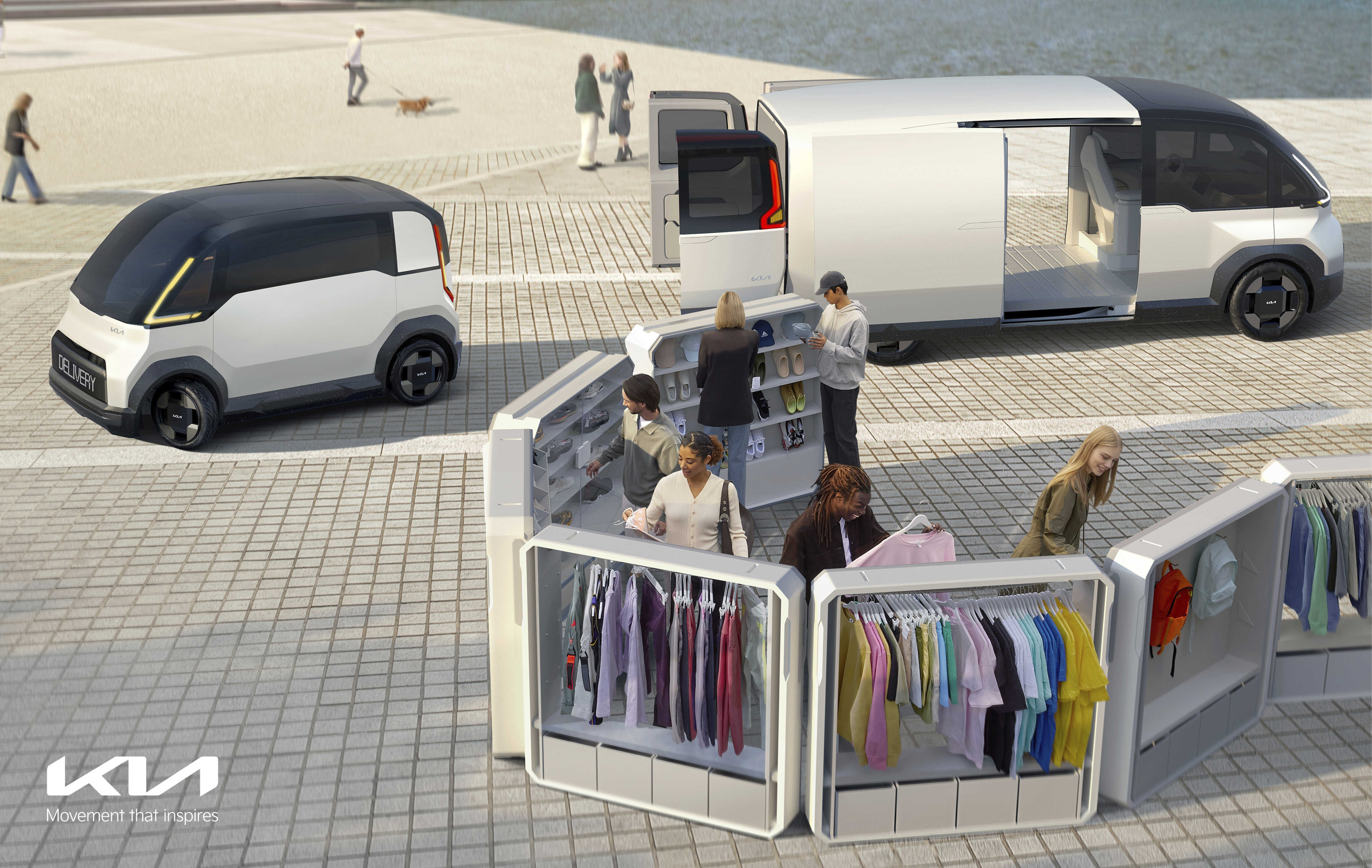
What if there were rental services specifically for PBVs for popup stores? The ‘MOD’ team proposed a PBV rental service offering modular furniture options based on requirements. This service removes the need for recurring venue rentals and interior redesigns in major locations, leading to cost savings and improved environmental friendliness by eliminating the requirement for construction work. The emergence of mobile PBV shops will certainly enhance the vibrancy of urban landscapes.
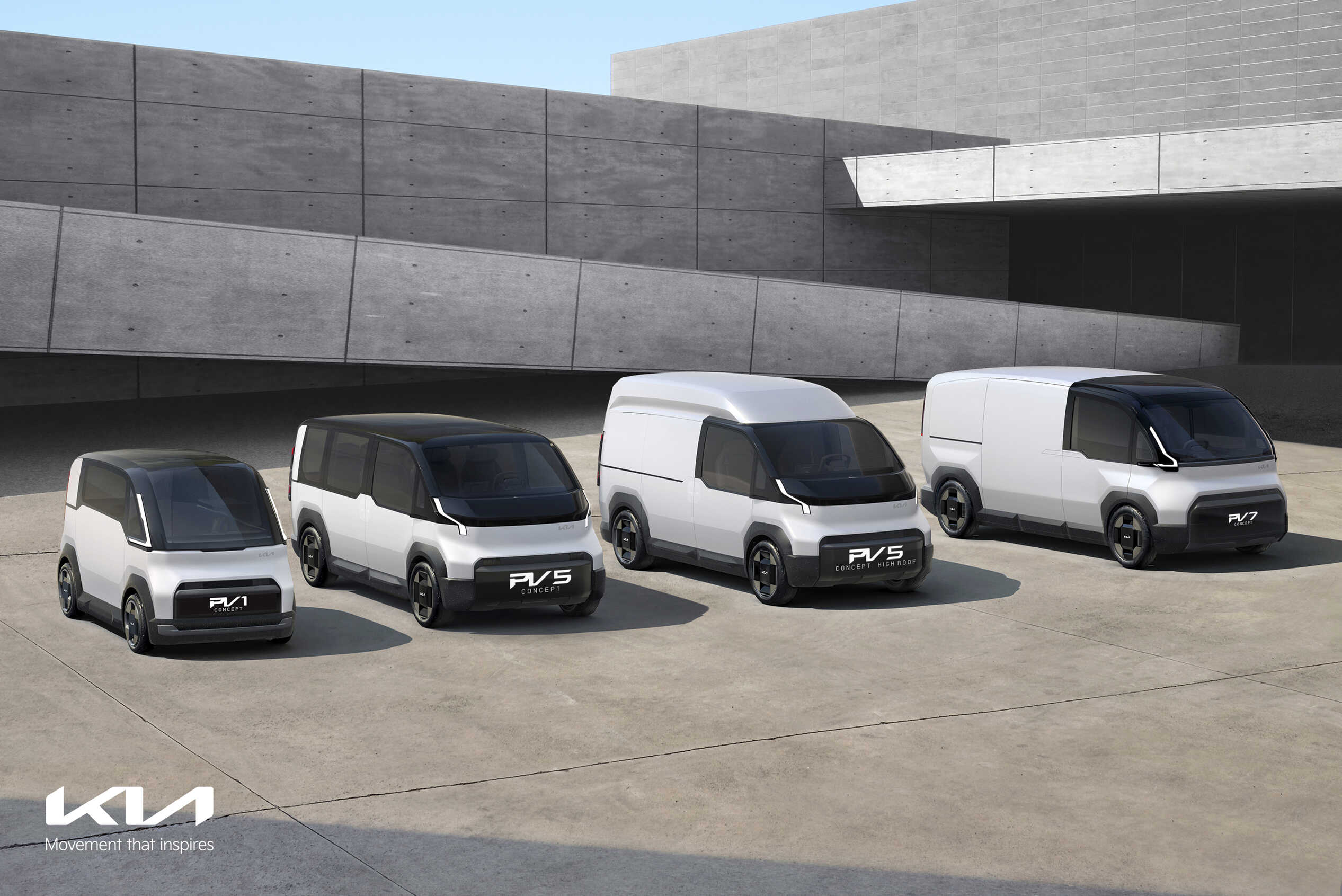
Crafting an automobile capable of encompassing such diverse ideas demands a great deal of dedication and thoughtful consideration. In essence, it implies the need to pay closer attention to customer feedback. Kia has identified PBVs as one of its primary future ventures in response to the expanding market and evolving customer demands, with the aim of transitioning into a future-oriented mobility company. Presently, they are in the process of establishing a specialized business infrastructure tailored for PBVs.
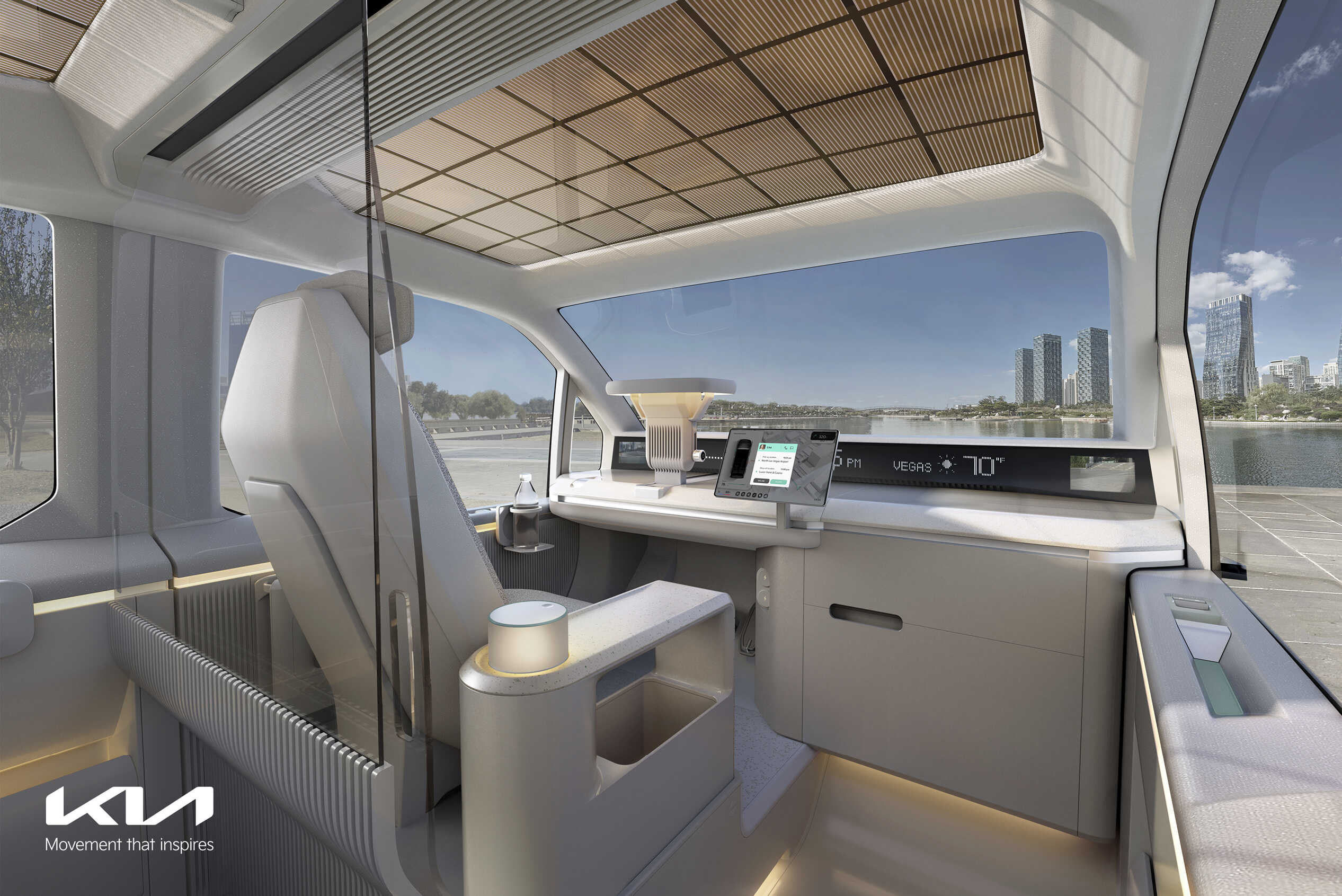
In 2025, Kia will commence the release of its first dedicated mid-sized PBV model. This launch marks the beginning of a broader lineup, including large-sized options for Last Mile Delivery vans and multi-passenger shuttles, PBV Robo-taxis integrating autonomous driving technology, and compact PBVs tailored for tasks like cargo or food delivery.
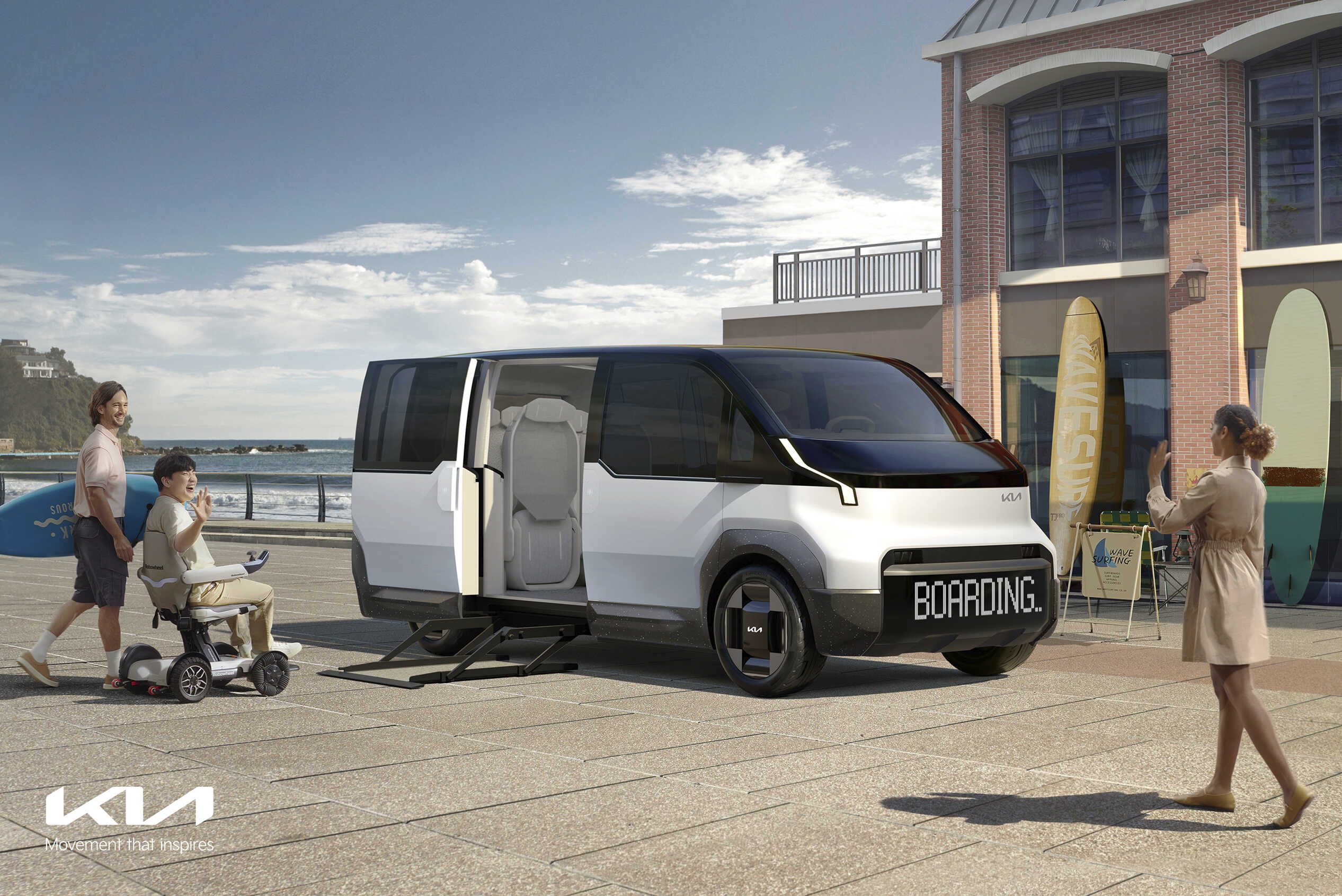
The recent PBV Idea Contest holds significant importance as it not only listens to the voices of regular customers but also caters to the needs of business owners and industry professionals seeking customized PBVs, thereby laying the groundwork for the realization of such ideas. Moving forward, Kia plans to create PBVs that satisfy the requirements of both B2B and B2C clients, drawing from a range of PBV utilization ideas. We hope that PBVs, shaped by Kia’s endeavors, will populate the streets of the future.
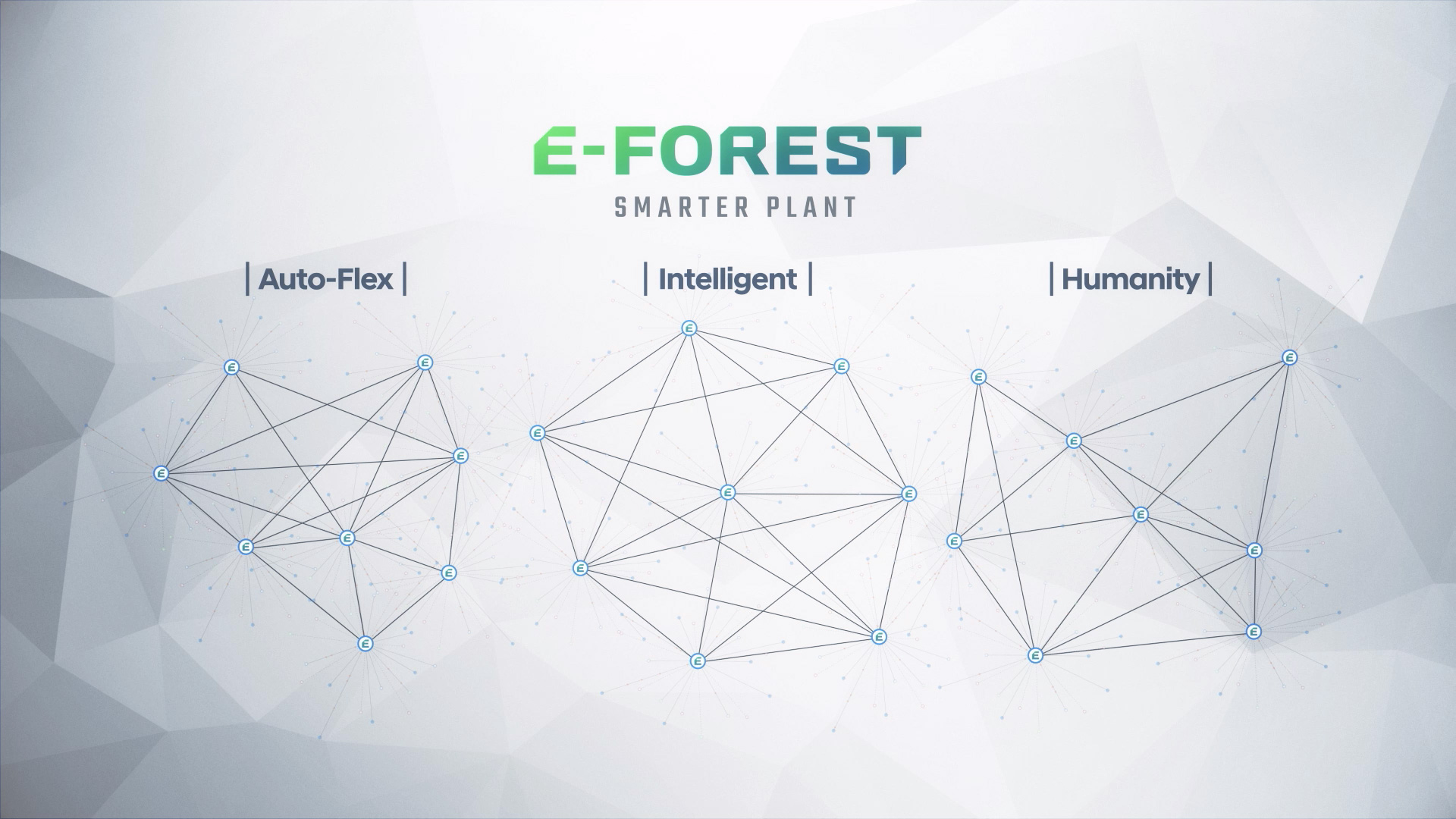
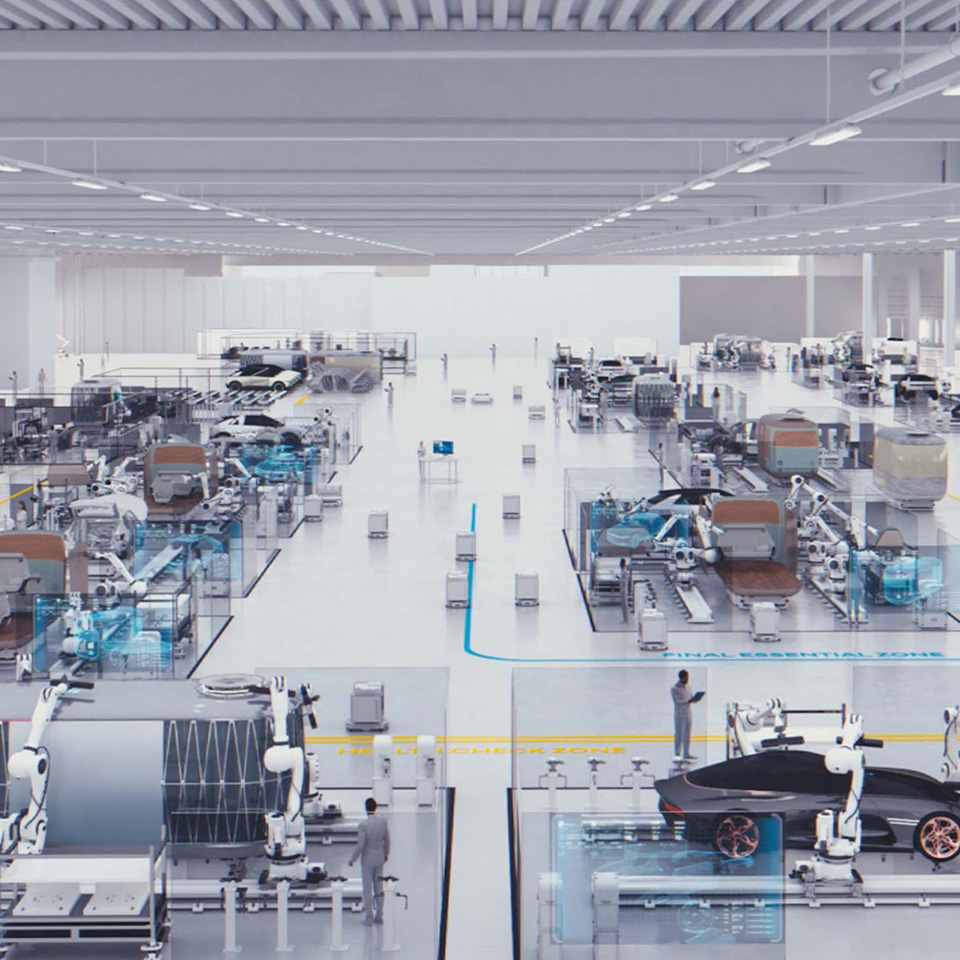
E-FOREST, The Future Mobility Smart Factory
2020.12.01 5min read